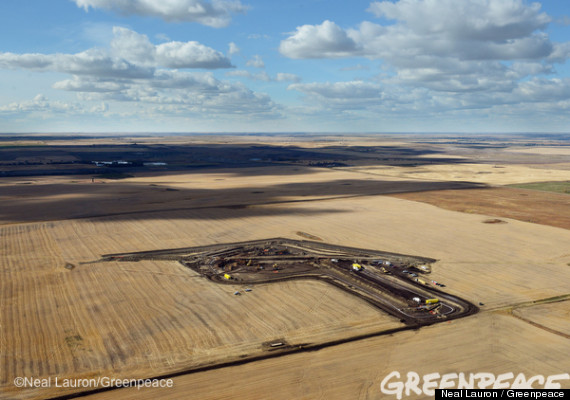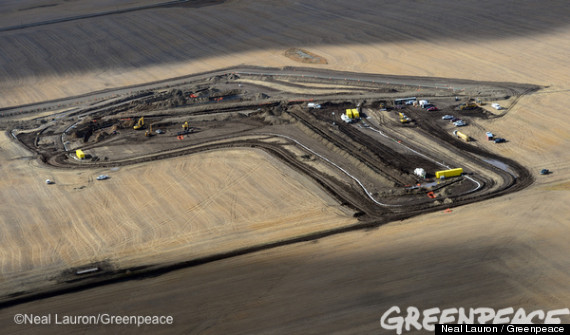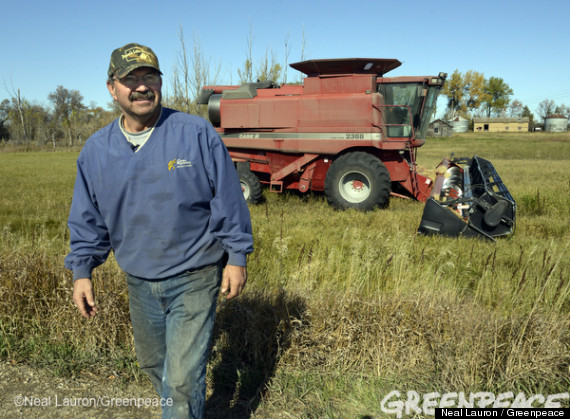BISMARCK, N.D. (AP) — Scientists who helped calculate oil spilled from a broken BP well into the Gulf of Mexico are questioning the methodology used to estimate the amount of crude that recently leaked from a ruptured pipeline into a wheat field in northwestern North Dakota.
Tesoro Corp. said it came up with its more than 20,000-barrel spill estimate using ground analysis. But oil spill experts say a more accurate assessment likely would come from calculating how much crude went into the pipeline versus what was supposed to come out at its terminus.
Farmer Steve Jensen discovered the North Dakota oil spill the size of seven football fields while harvesting wheat Sept. 29. Tesoro Corp. first estimated the spill at its underground pipeline near Tioga at 750 barrels. About a week later, the San Antonio, Texas-based company increased the estimate to 20,600 barrels, or some 865,000 gallons, making it one of the largest spills in North Dakota history.
Tesoro said in a statement to The Associated Press that it based its calculations on "data collected during our field investigation work. This investigation included a thorough examination of the site spill characteristics including factors such as surface area and depth of soil impacted, and soil porosity." The company would not elaborate.
The company said its "site investigation was developed based on well-established and recognized American Petroleum Institute, Geologic Society of America and American Institute of Professional Geologists standards."
Jack Hess, executive director of the Geologic Society of America, and Bill Siok, executive director of the American Institute of Professional Geologists, said their groups have no such standards.
"We've never issued any guidelines over oil spills," Hess said. "That's not the kind of business we are in and something we wouldn't get into."
Siok said: "I'm stumped. I kind of suspect they made an incorrect reference."
A spokesman for the American Petroleum Institute, a Washington, D.C.-based oil and gas industry trade group, confirmed the group offers "a number of tools" that Tesoro could be using to calculate the spill figure. Spokesman Carlton Carroll said he didn't have enough information about the spill to provide any other details.
Purdue University engineering professor Steve Wereley said Tesoro's calculation of how much oil it released in the North Dakota wheat field likely is "at best, a guess."
Wereley, who along with other scientists helped estimate the amount of oil spilling into the Gulf in 2010, said he was unaware of any scientific studies that could back Tesoro's estimates. Wereley and Ian MacDonald, a Florida State University oceanographer who also worked on spill estimates in the Gulf, said detailed oil flow data from the pipeline would provide regulators with a better estimate of the amount of crude spilled in North Dakota.
MacDonald said properly estimating the size of an oil spill "is not trivial."
"Both the environmental impact and the liability of the company are directly related to the precise amount of the release," MacDonald said. "That is why it is critical to know."
Dave Glatt, chief of the state Department of Health's environmental health section, said Tuesday that the company has not provided that information to regulators, but that the state intends to request flow and pressure data.
The state's estimate is based on calculations provided by the company, Glatt said, adding that the release of oil has been stopped and the 7.3-acre spill area has been contained.
"The main thing," Glatt said, "is we know where it is and where it isn't."
Meanwhile, the federal Pipeline and Hazardous Material Safety Administration that has jurisdiction over oil pipelines remains closed because of the ongoing federal government shutdown.
The spill happened in a remote area in the northwest corner of the state. The nearest home is a half-mile away, and Tesoro and the state say no water sources were contaminated, no wildlife was hurt and no one was injured.
Tesoro has said that the hole in the 20-year-old pipeline was a quarter-inch in diameter. Tesoro officials have not speculated on what caused the hole in the 6-inch-diameter steel pipeline that runs underground about 35 miles from Tioga to a rail facility outside of Columbus, near the Canadian border. State officials have said it may have been caused by corrosion.
The company said Tuesday that it will "remove, reroute and replace" a 200-foot section of pipe and send a portion of it to an independent laboratory for testing. Tesoro said it is developing plans to restart the pipeline but the timeline is not yet known.
North Dakota sweet crude was fetching $86.50 on Tuesday. Based on Tesoro's spill estimate, the loss to the company would be about $1.78 million. The company, which has a network of some 700 miles of pipelines in North Dakota, also has estimated cleanup costs at $4 million. State officials have said the cleanup could take years.
Glatt, the state Health Department's environmental chief, said the state and company are committed to the cleanup — and ensuring that a spill doesn't happen again.
"No company has a vested interest in losing money because of the cost of oil and the cost to clean it up," he said.
___
Follow James MacPherson on Twitter at http://www.twitter.com/macphersonja.




No comments:
Post a Comment